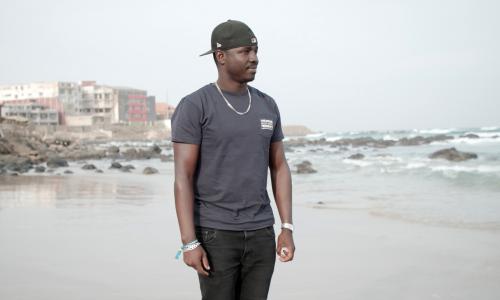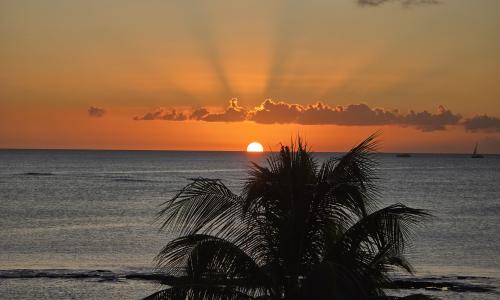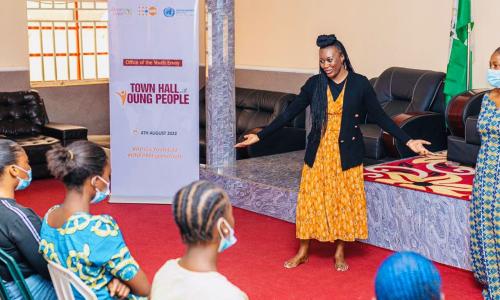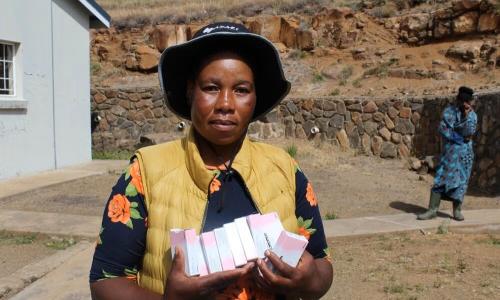The governments of Liberia and Sierra Leone, in partnership with the United Nations, have launched the Resilience, Empowerment, Access and Peacebuilding (GOLA-REAP) project, aimed at protecting the biodiversity-rich Gola Rainforest while fostering peace and sustainable development.
The $4 million initiative is financed by the United Nations Secretary-General’s Peacebuilding Fund, which is the UN’s primary financial instrument for preventing conflict and supporting joint UN responses that integrate humanitarian, human rights and peacebuilding efforts.
Conserving biodiversity is not just an environmental priority for Sierra Leone and Liberia, it is also a peacebuilding strategy.
The Gola Rainforest, spanning about 700 square kilometres and stretches across both countries, is home to diverse wildlife, including over 300 bird species and endangered primates such as pygmy hippos, chimpanzees, and forest elephants.
Unfortunately, many of these species are classified as globally threatened on the International Union for Conservation of Nature Red List.
At the 27 February 2025 GOLA-REAP project launch in Bo-Waterside, Liberia—just across the border from Sierra Leone—the chirping of birds overhead felt like a celebratory endorsement of the initiative designed to protect their habitat.
The initiative will enhance resilience in border communities by promoting sustainable land access, empowering youth and women to prevent and address conflicts related to the use and access of the natural resources and improving forest management.
It also will provide training on conflict prevention and resolution, community-driven land mapping, and border monitoring for key stakeholders, including local leaders, rangers and border officials.
By fostering trust and collaboration, the project will strengthen social cohesion, improve border management and promote sustainable resource use.
A shared history
Liberia and Sierra Leone are more than just neighbours; they share a history of economic cooperation, cultural ties and, regrettably, past conflicts.
Both countries endured brutal civil wars in the 1990s and public health crises like the Ebola epidemic of 2014–2015, which claimed tens of thousands of lives. But today, the focus is on development and peacebuilding.
One crucial step toward achieving this goal is ensuring the sustainable management of natural resources. The illegal logging of Gola’s forests not only threatens biodiversity but also disrupts local livelihoods.
At the launch event, my colleague, the UN Resident Coordinator in Liberia, Christine N. Umutoni, and I emphasised the urgent need to curb these destructive activities.
Deforestation not only destroys flora and fauna but also erases a critical carbon sink that helps mitigate climate change and resulting effects including conflicts over shrinking resources.
The economic case
Beyond environmental concerns, protecting the Gola Forest makes economic sense.
The forest has been validated by the Verified Carbon Standard (VCS) and the Climate, Community, and Biodiversity Alliance (CCBA) as capable of generating carbon credits.
Reports indicate that about 19 million tonnes of carbon are stored in Gola Forest, and conservation efforts could help reduce emissions by up to half a million tonnes of carbon dioxide equivalent (CO2e) annually.
This presents a viable opportunity for both nations to secure sustainable revenue while combating climate change.
Additionally, safeguarding the Gola Forest promotes social cohesion and cross-border cooperation.
As I traveled from Sierra Leone’s capital, Freetown, through Bo in the Southern District to Bo-Waterside in Liberia, I witnessed firsthand the shared ethnic and cultural heritage of both nations.
People on both sides of the Mano River speak the same languages, inter-marry and engage in regular cross-border trade.
At the Liberian border post, some of my colleagues bought bananas from a Liberian woman and paid in Sierra Leonean Leones—highlighting the everyday interactions that bind these communities together.
In December 2024, Ms. Umutoni traveled in the opposite direction, from Monrovia to Freetown, and was equally struck by the verdant forests and the aspirations of citizens for a better life. The scars of war are fading, replaced by a collective vision for sustainable development and peace.
Government commitment
Both the Liberian and Sierra Leonean governments deserve credit for their commitment to environmental conservation.
Sierra Leone’s Minister of Internal Affairs, Morie Lengor, spoke passionately at the launch event about the need to halt illegal logging and empower local communities to manage resources sustainably.
Similarly, Liberia’s Deputy Minister of Internal Affairs, Edward K. Mulbah, described the Gola Forest as a “shared heritage and a pillar of peace, security, and economic resilience.”
The commitment of both countries to conservation is longstanding. In 2009, they pledged to create the Gola Transboundary Peace Park, recognising the deep connection between conservation, peace and sustainable livelihoods.
This commitment was reinforced in 2011 with the signing of a Memorandum of Understanding (MOU) on Gola Forest management, reaffirmed again in 2020.
A proven approach to peacebuilding
The GOLA-REAP project builds on past peacebuilding successes.
From 2021 to 2024, the Peacebuilding Fund supported cross-border efforts between Sierra Leone and Guinea to strengthen governance, law enforcement, and conflict resolution mechanisms.
That initiative helped reduce tensions between cattle herders and crop farmers, improve border security, and promote conservation efforts in the Gola region. Lessons learned from that project are now being applied to ensure the success of GOLA-REAP.
As we drove back to Freetown, stopping in Bo along the way, I reflected on the significance of this project.
Getting it right is crucial—not just for the peace and stability of Sierra Leone and Liberia, but for the broader Mano River Union region and Africa as a whole.
With strong government leadership, active community participation and ownership, and support from international partners, the GOLA-REAP project is well-positioned to transform border communities, strengthen conservation efforts, and build a lasting foundation for peace.
Therefore, the expectation is high for the International Organization for Migration (IOM) and the World Food Programme (WFP), the key implementing agencies of GOLA-REAP, to deliver on the promises of the project.
I am excited about the impact this initiative will have in the coming months and years.
Ms. Wakana is the United Nations Resident Coordinator in Sierra Leone







